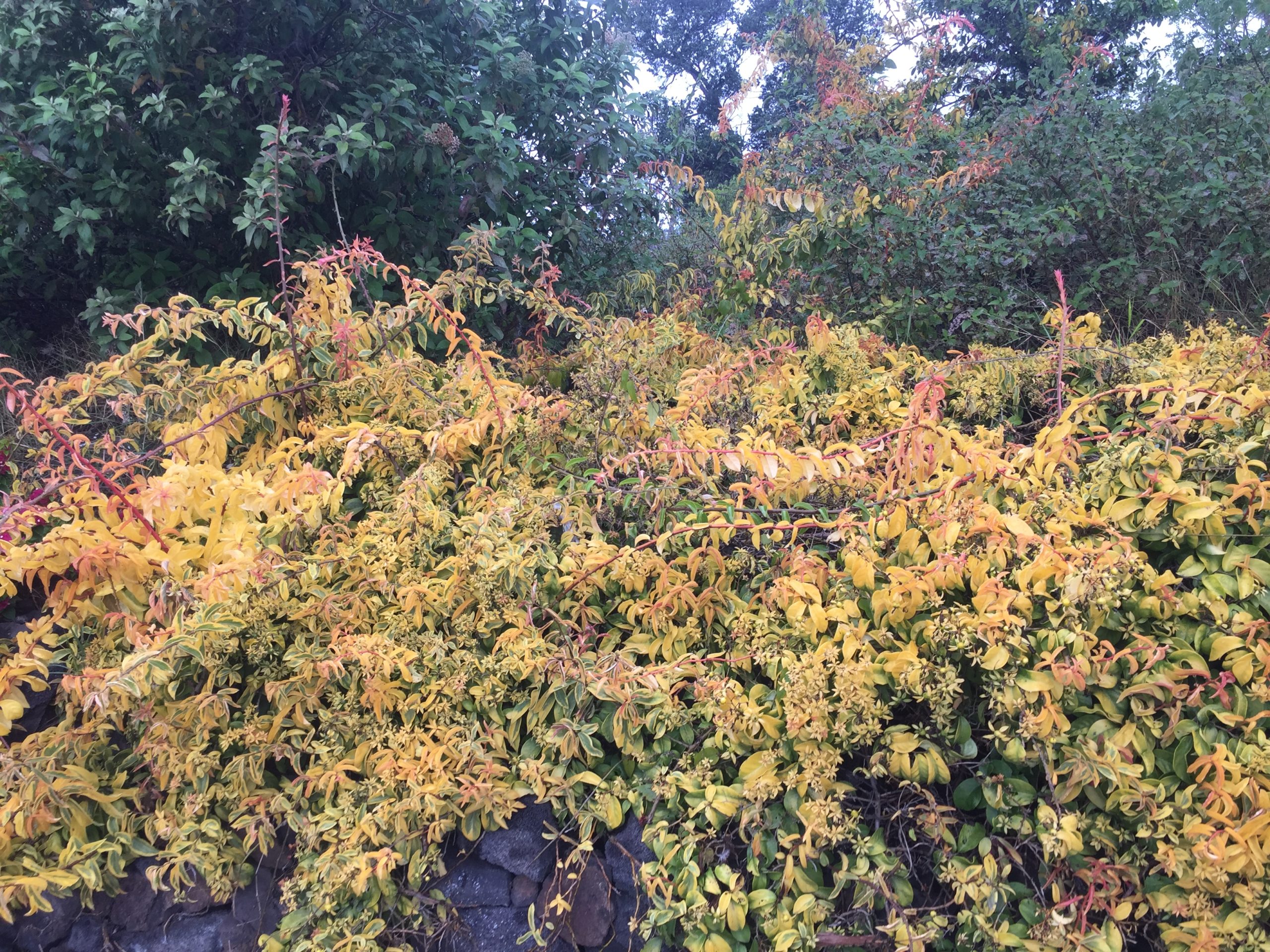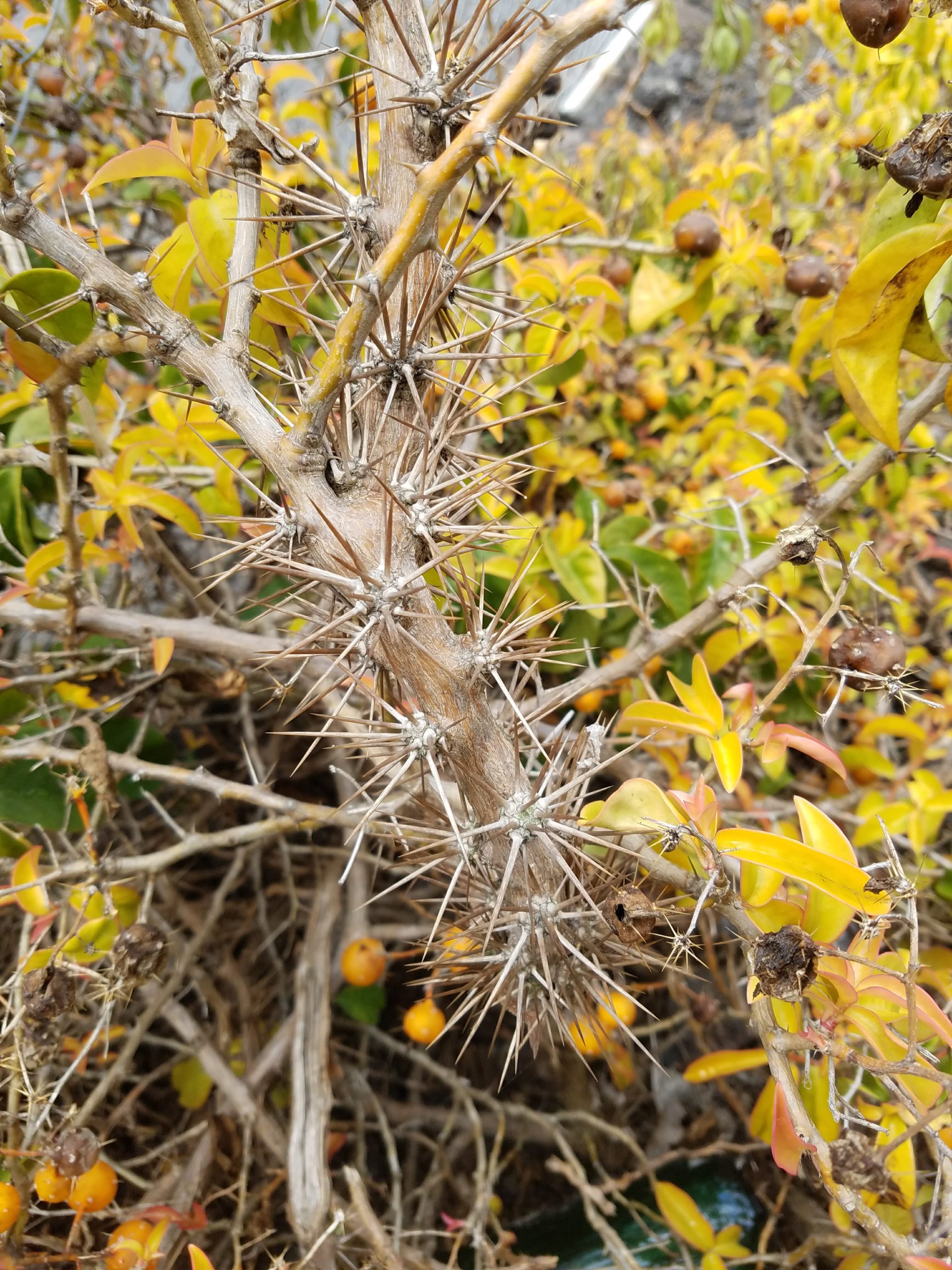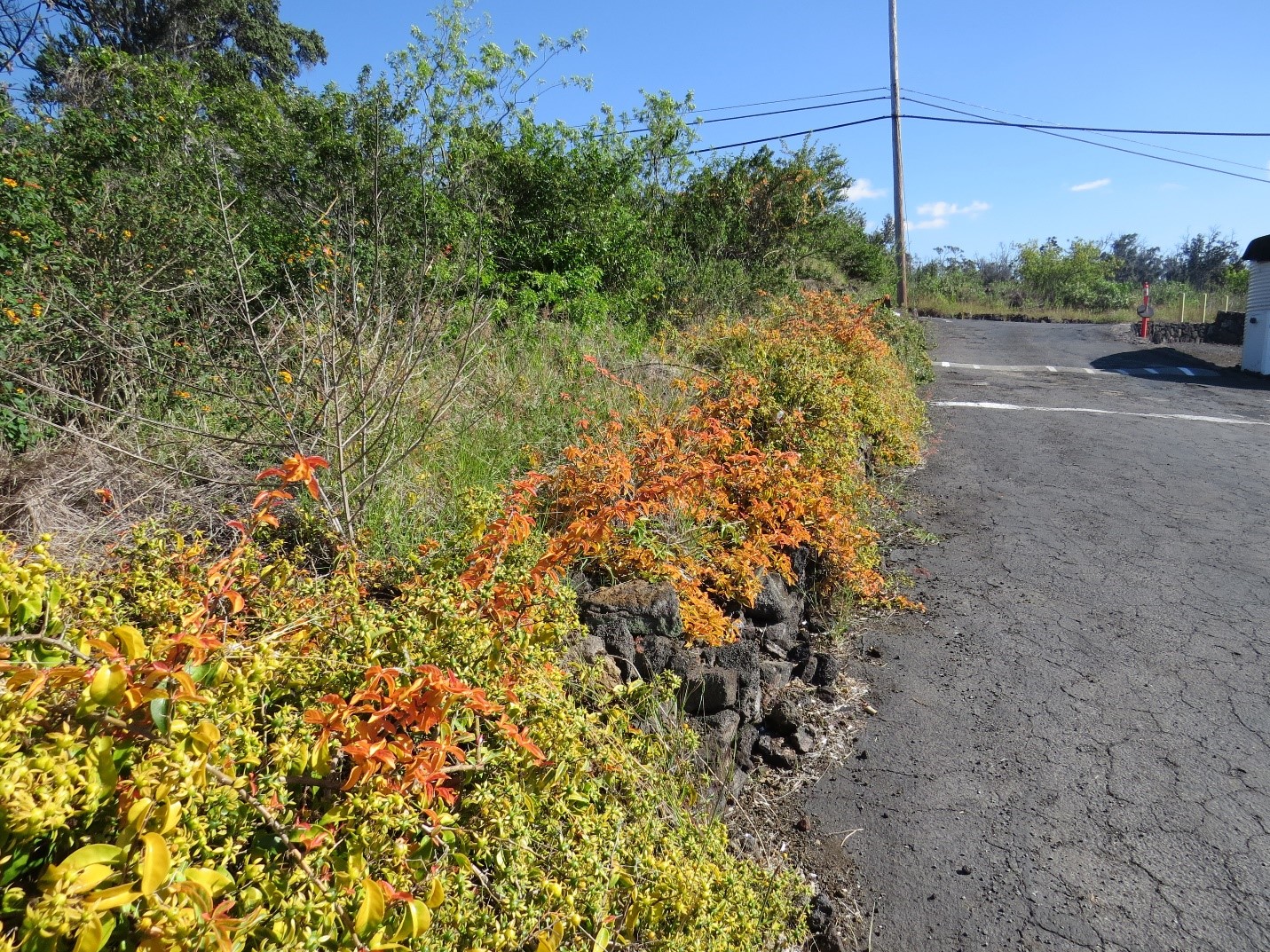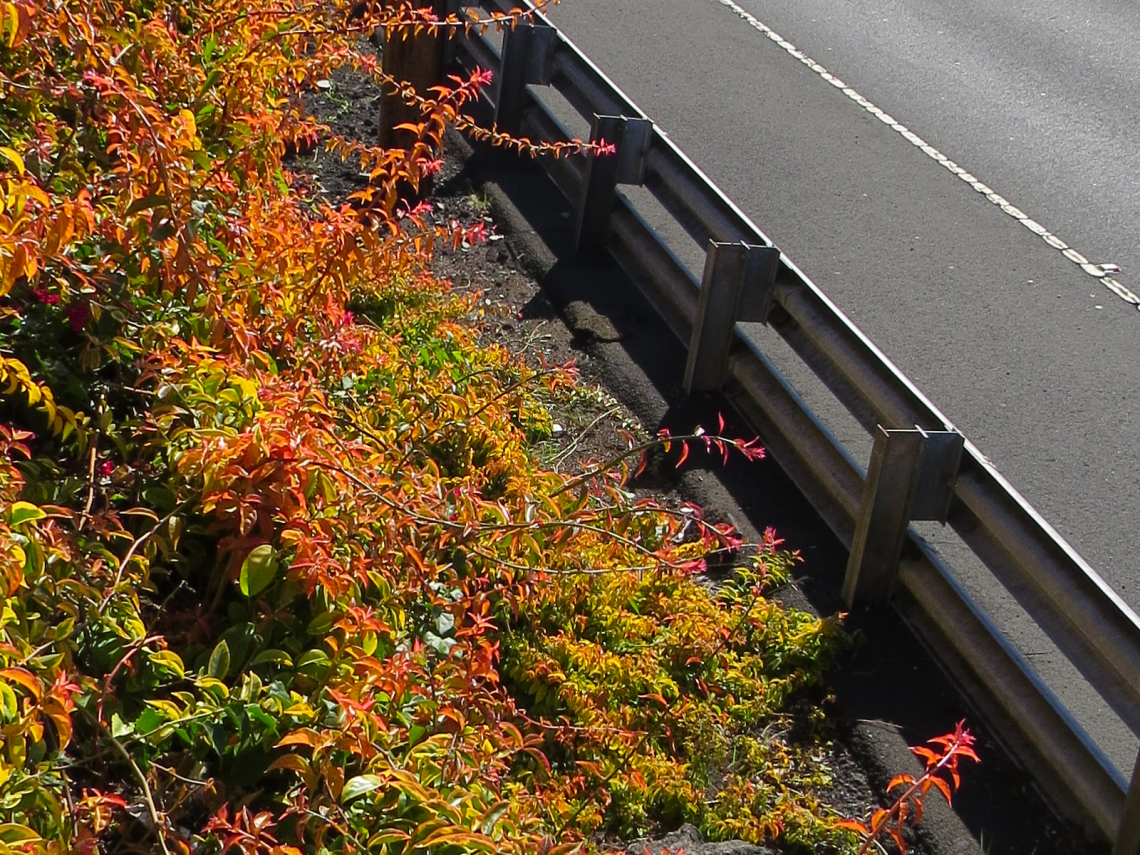
Barbados Gooseberry
REPORT IF SEEN: Contact BIISC to schedule a free removal
Barbados gooseberry is native to the West Indies and the northern coast of South America. Likely introduced through the ornamental plant trade, it is invasive in Hawaii and other tropical locations. Plant Pono endorsed businesses on Kauai, and Hawaii Island do not sell or cultivate this invasive plant. It is an eradication target species for MoMISC. Since 2008, they have been eradicating it from Halawa Valley. Additionally, Barbados gooseberry has been a BIISC target species since its discovery in 2013.
Impacts:
- Forms large impenetrable thickets that smothers other vegetation
- Extreme thorniness and the inability to soak up foliar herbicide makes control of large infestations difficult
- Stems and detached leaves stay alive and can root months later
- Capable of adapting to a variety of environmental conditions
Description:
- A primitive leafy cactus with climbing woody stems
- Succulent leaves are alternately arranged
- Leaves vary in color from green to red to yellow to purple
- White flowers grow in clusters and are strongly scented
- Orange fruits covered with spines containing many seeds inside
- Numerous thorns, hooks and spines
Barbados Gooseberry (Pereskia aculeata)
Photos: BIISC
BIISC’s Control Efforts
There are two varieties found on Hawaii island. The first detection with green leaves and stems was discovered in 2013. It has been eradicated from the Hawi area. The second variety, detected in 2017, ‘Godseffiana’ has variegated orange and pink leaves. It is much more widespread – which isn’t surprising considering its popularity in the horticulture trade. Cultivated plants have been found island-wide from Waimea, Hilo, Puna, and Oceanview. BIISC exchanges noninvasive plants similar in color and habit, such as bougainvillea, for the invasive Barbados gooseberry when a landowner requests.
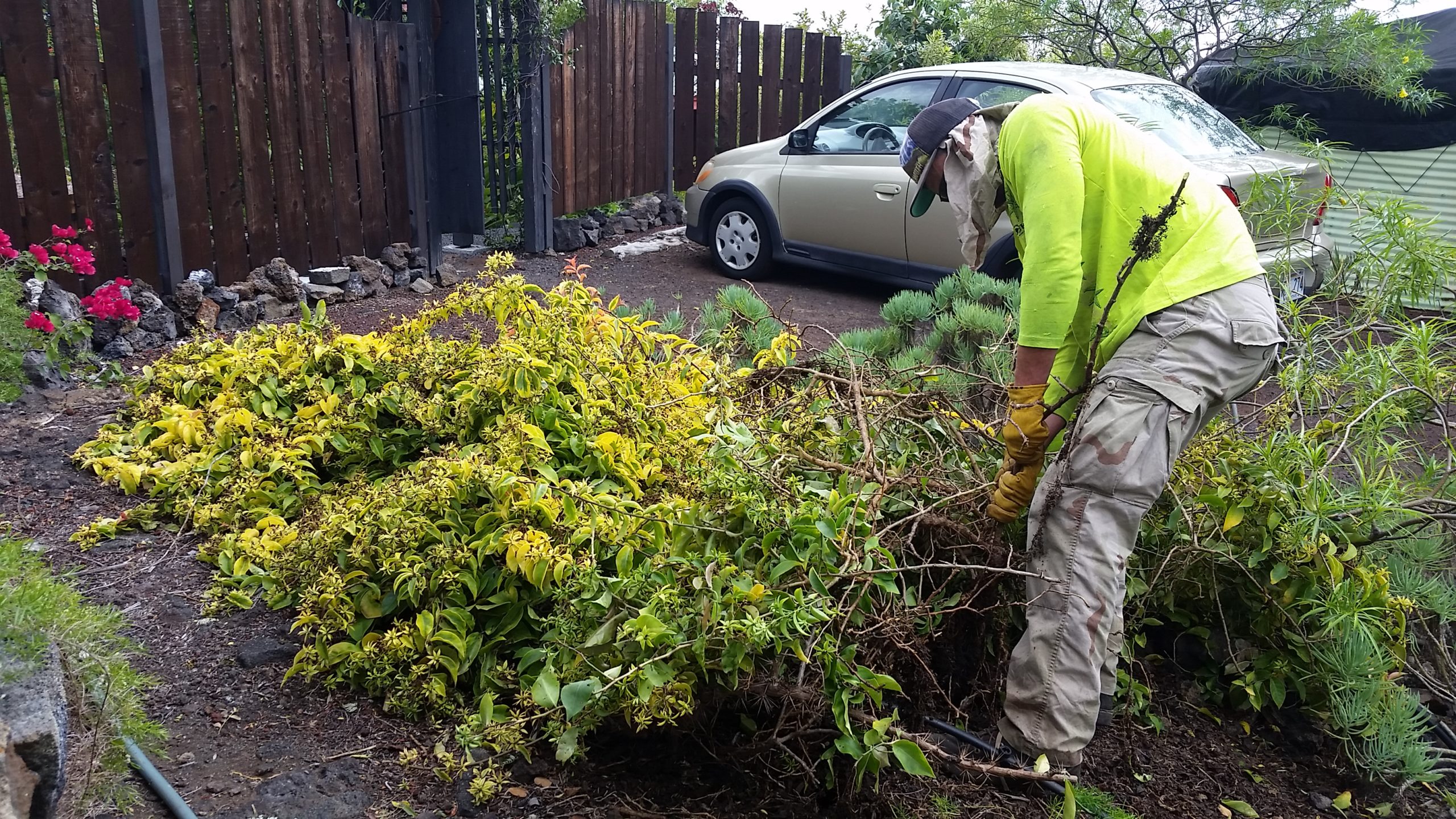
Hand-pulling 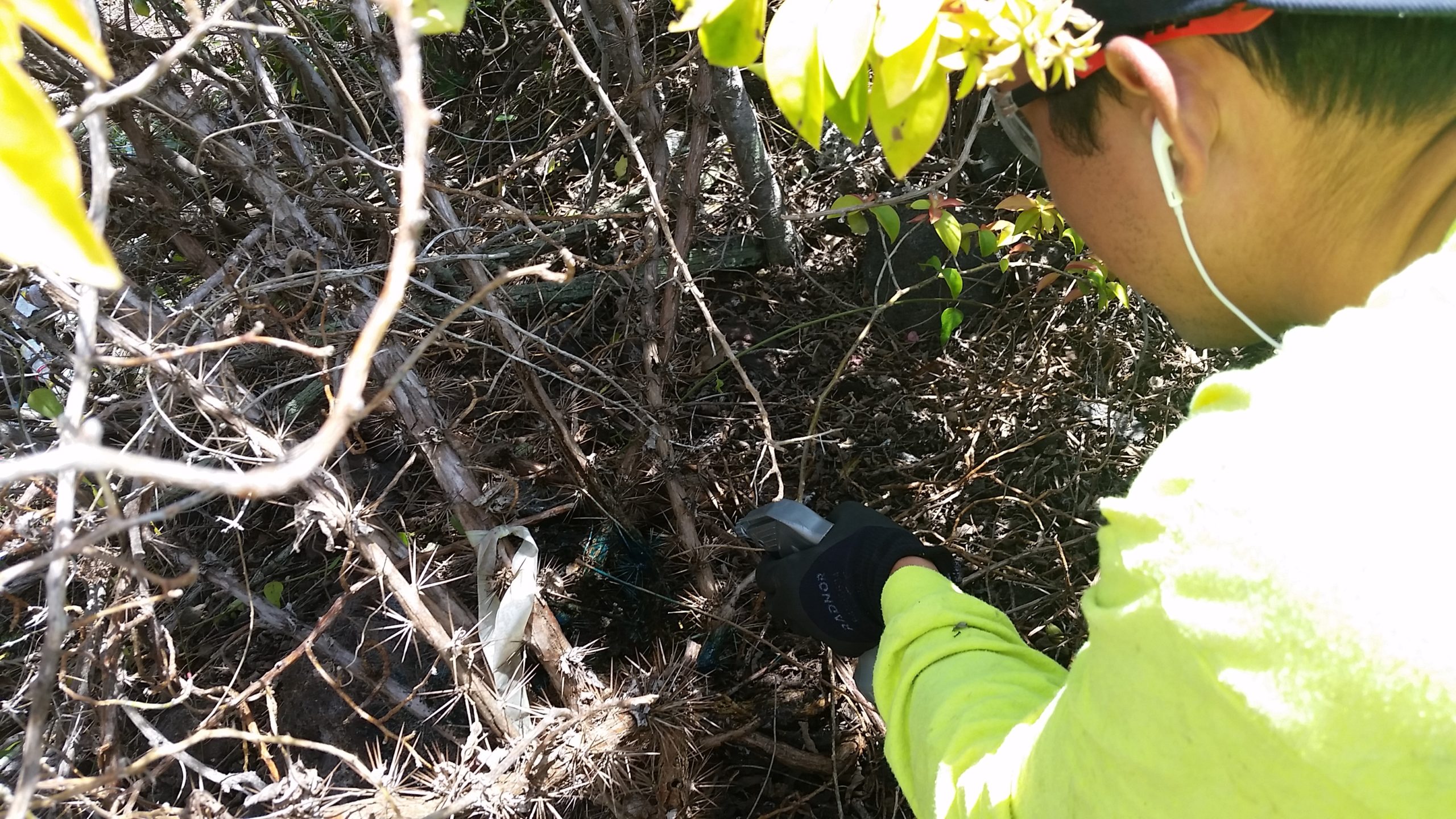
Chemical control 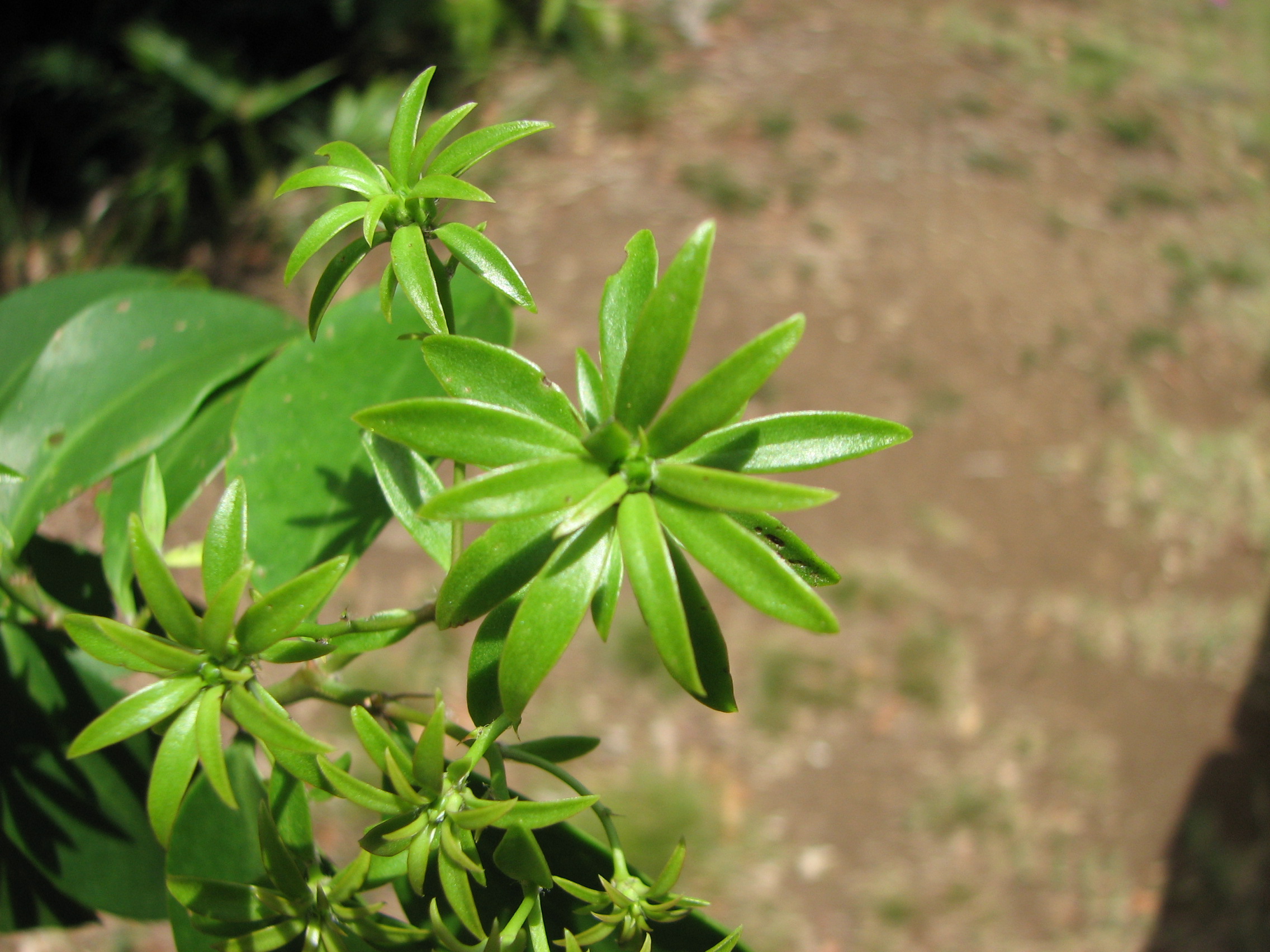
The first population has been eradicated from Hawi.
